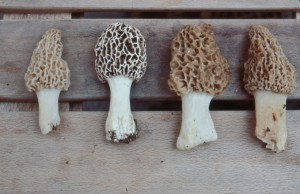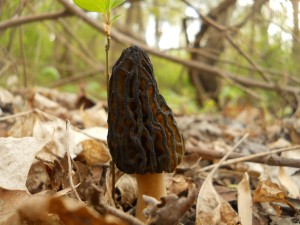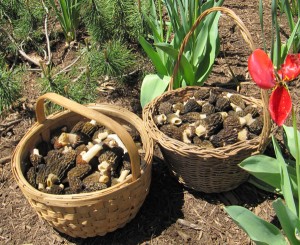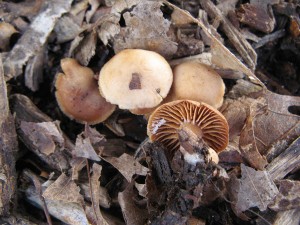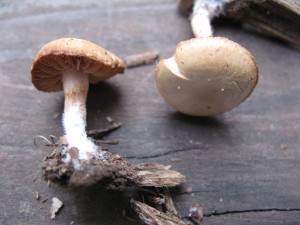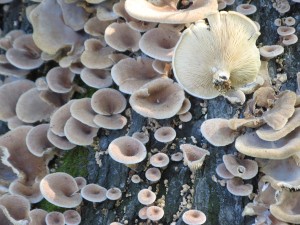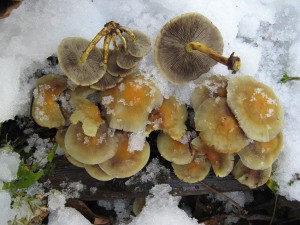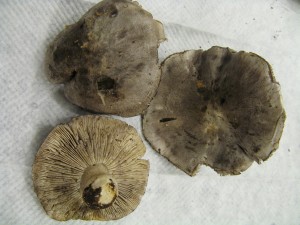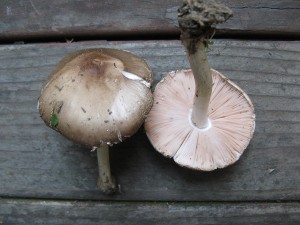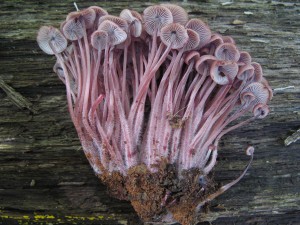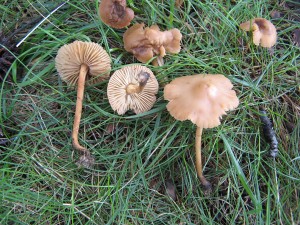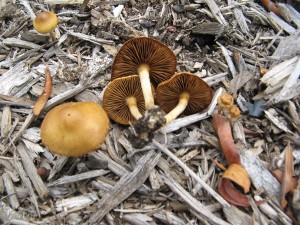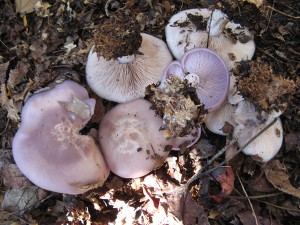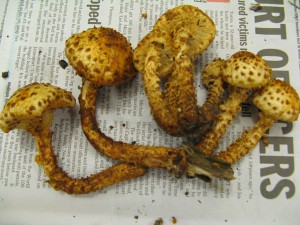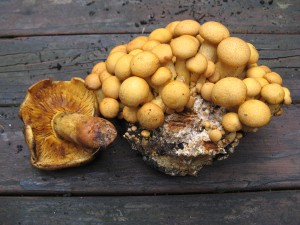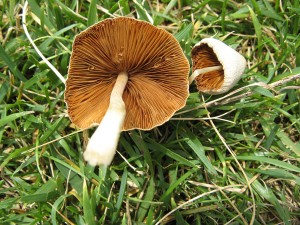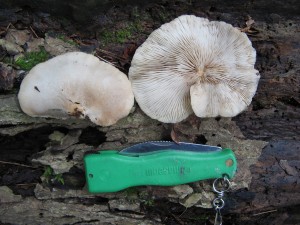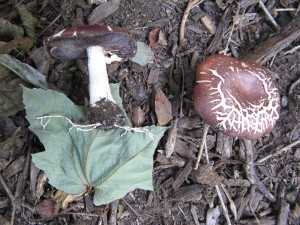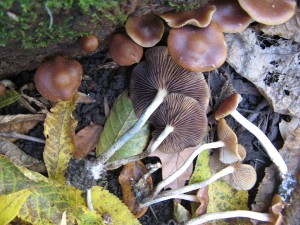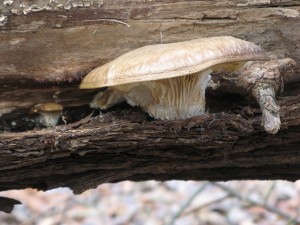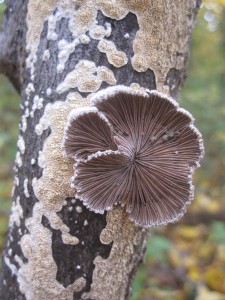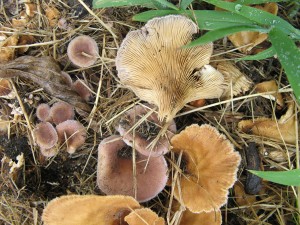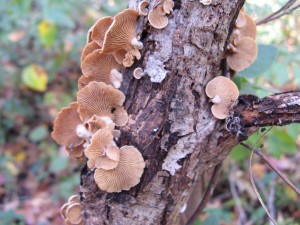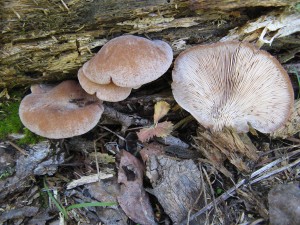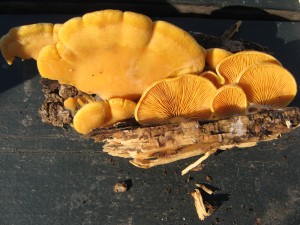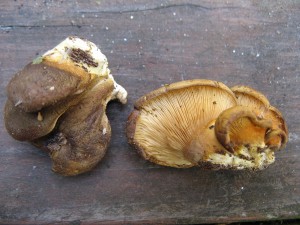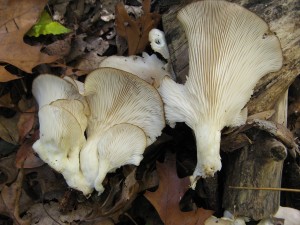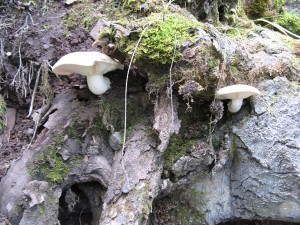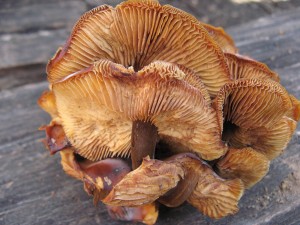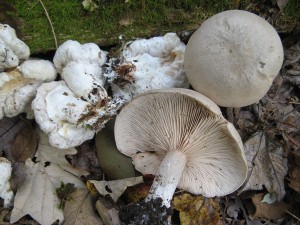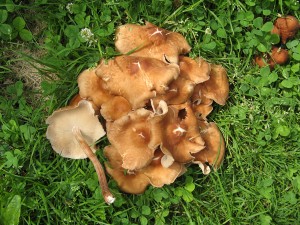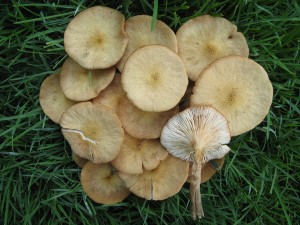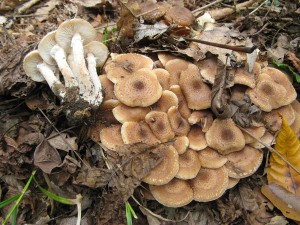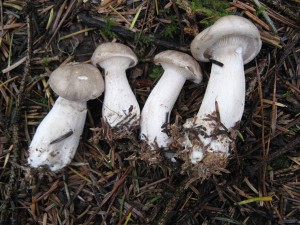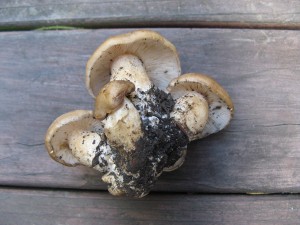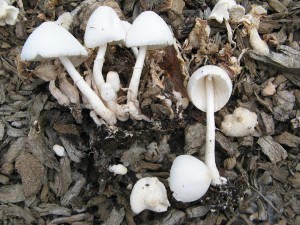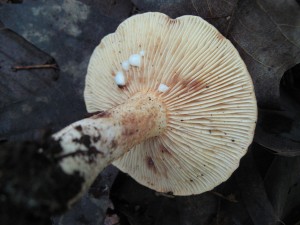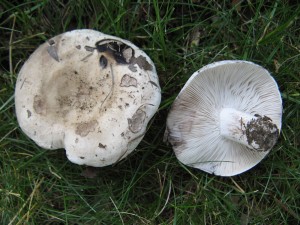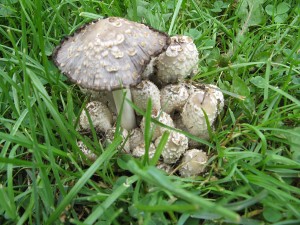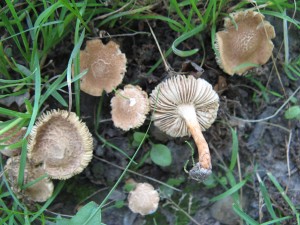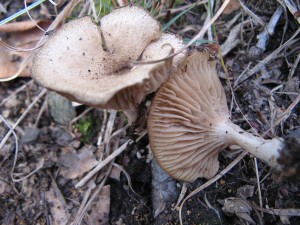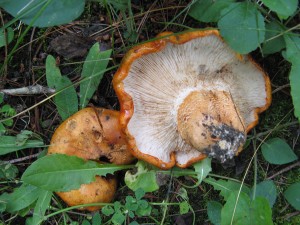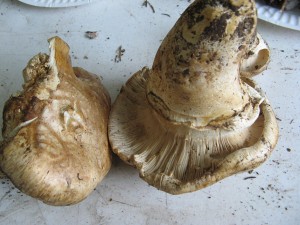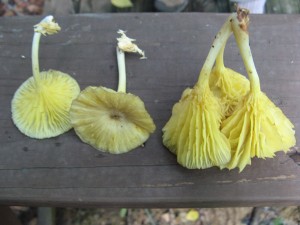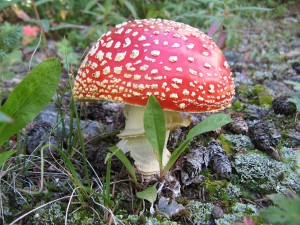READ THIS KEY TO MORELS IN THE US AND CANADA – DO YOU RECOGNIZE THE ONES WE HAVE IN OUR AREA? THERE ARE AT LEAST 3 DIFFERENT ONES IN THIS KEY. WHAT ARE THEY?
Key to 20 phylogenetic species of Morchella in the United States and Canada…….from “Revision of Morchella taxonomy,” Mycologia, April 2012, by Michael Kuo, et al.
1 Ridges dark gray or brown or black when young or pale when young and darkening to brown or black with maturity…2
1’ Ridges pale yellowish, pale brownish, or rufescent throughout development…12
2 Hymenophore only partially attached to the stipe, sinus 8-20(-25) mm at point of attachment…3
2’ Hymenophore almost completely attached to the stipe except for a small (2-4mm) sinus at the point of attachment…4
3 Assoicate with Populus trichocarpa in western North American river bottoms……M. populiphila
3’ Associated with various hardwoods from the Great Plains eastward…M. punctipes
4 Appearing in conifer burn sites in western North America…5
4’ Not found in conifer burn sites; variously distributed…7
5 [western U.S. only]
6 [western U.S. only]
7 Pits and ridges usually arranged in a ‘laddered’ vertical appearance, appearing in landscaping areas and woodchip beds in urban areas in western North America….8
7’ Pits and ridges not usually arranged in a ‘laddered’ vertical appearance….9
8 [western U.S. only]
9 Found from the Rocky Mountains westward…10
9’ Found from the Great Plains eastward…11
10 [western U.S. only]
11 Distributed from roughly 44 N latitude northward (currently known only MI-NY); ascomata 40-75 mm high; ascospores (19-)20-22(-25) m long….M. septentrionalis
11’ Widely distributed from the Great Plains eastward; ascomata 50-140+ mm high; ascospores 22-27 m long….M. angusticeps
12 [from 1’ above] Surfaces tomentose and usually dark gray to black when young, covered with projecting hairs….from conifer burn sites in western North America……M. tomentosa
12’ Surfaces glabrous to finely tomentose, not covered with projecting hairs……13
13 Appearing in landscaping areas and woodchip beds in urban area in western North America but introduced to central Michigan from California; ridges notably rufescent ……M. rufobrunnea
13’ Ridges pale brownish to smoky brown or black, not notably rufescent…14
14 Hymenophore usually subconic to conic, attached to the stipe with a notable sinus; western North America…15
14’ Hymenophore attached to the stipe without a notable sinus…16
15 [western U.S. only]
16 Mature ascomata small to medium (35-125 mm high); pits primarily vertically arranged; distributed east of the Great Plains……17
16’ Mature ascomata medium to large (50-220+ mm high); pits more randomly arranged; variously distributed…18
17 Hymenophore usually ovoid with a bluntly conic to subconic apex, 30-70 mm high; elements on sterile edges scattered and infrequent, variable in shape; southeastern in distribution……M. virginiana
17’ Hymenophore usually subconical to conical, 20-40 mm high, elements on sterile ridges abundant, usually subfusiform; widely distributed east of the Great Plains……M. diminutiva
18 Pits and ridges contorted, asymmetrical and irregular; ridges often remaining flattened or widely rounded into maturity; elements on sterile ridges scattered and infrequent (43-50 N. latitude)……M. prava
18’ Not as above…19
19 Distributed in the Great Lakes region from Ontario to Illinois and Virginia; morphologically indistinguishable from M. esculentoides….M. cryptica
19’ Widely distributed and common east of the Rocky Mountains (including the Great Lakes region); in western North America in river bottoms or in urban areas………………………………………….M. esculentoides
- – - – - -
OK – Now that you’ve read over this key, NAME THE MORELS IN THIS PHOTOGRAPH – [photo taken in southern NY, all morels found within 100 foot diameter]
Scott Hamilton posted this photo on Facebook. Can you name this morel? [Clue: it's from Pennsylvania. At least that tells you what it's not!]
Nancy Ward posted this photo of black morels from West Virginia – Using the key above, is it possible to identify the species here?
MORELS in our area…….Morchella angusticeps(the black morel), Morchella esculentoides (the blond morel), Morchella punctipes (the half-free morel), and maybe Morchella diminutiva (the small grayish conical morel under tulip-poplar)…..
——————————————————————————————————————————–
NAME THAT GENUS - Using the Audubon Guide chart in the appendix, see if you can name the gilled mushroom genus in these photographs. Not all photos represent species in the Audubon Guide but the genera (plural of genus) should be recognizable. In a few cases, “new” genera are included to see how you interpret what you see. Feel free to use whatever guides or sources you have at hand. The point it to get used to looking for key characteristics for easy field identification of the different gilled mushroom genera……….Images #1-#50……On a piece of paper, number 1 to 50 and put your best guess as to the genus.
March 10th discovery in the wood chip mulch under the picnic tables at Muscoot Farm – What is this mushroom? It has a brown spore print. There is a partial veil leaving a thin ring on the upper stem. The gills are attached. The cap is dry, not scaly or lined in any way. The one on the right in the second photo looks like it could crack into patches, otherwise the caps look smooth.
1 This mushroom grows on wood, has a white spore print, a stem that is either eccentric, lateral or almost none at all. The mushroom is fleshy-tough, the cap often hairy. (Not poisonous but too tough.)
2 This fall mushroom grows on wood, typically in clusters, has a purple-brown spore print despite its gill color, which is often greenish yellow when young, then brownish. Common. (Not edible)
3 This mushroom grows on the ground in woods – mycorrhizal – and has a white spore print. It has a fleshy cap and stem. The gills are attached. It has no universal or partial veil. It has dry, not waxy gills or flesh. It is not included in the Audubon Guide (as a species), but it can be identified to genus using the chart in the appendix. (Not known to be edible.)
4 Here are two different species in the same genus. Note the partial veil. The gills are clearly free. The spore print will be chocolate brown despite the pale color of the immature gills. The mushrooms grow on the ground in grassy areas in the fall. (Both are choice edibles!)
5 This mushroom grows on wood (or buried wood). It has free gills. The spore print is “pink” (actually a salmon-brown, but pink to salmon is how you interpret its color) {Edible)
6 This fall mushroom grows on the ground under trees – mycorrhizal – and has a fleshy cap and stem. It has a brown spore print. The gills are attached to the stem and they have a radish odor (you have to smell the gills to detect this.) There is no veil or ring on this species. (Poisonous)
7 This white spored mushroom grows in clusters on wood. It has a bell-shaped cap, attached gills, and a thin fragile stem. There are no veils. (Not worth eating, but not poisonous)
8 This pretty mushroom grows on the ground under trees – mycorrhizal – and has a white spore print. The gills are attached to the stem, and they will shatter when struck. Many species in this genus are red or yellowish. (This species is a good edible, but not all species in this genus are good to eat!)
9 This small mushroom is white spored and grows in grassy places. It has a distinctly rubbery stem, which means you can bend it and it won’t break. (A good edible)
10 This springtime brown spored mushroom grows in wood mulch. It has attached gills. The cap is typically smooth or hairless. Some species show a cracked cap when growing in sunny areas. There is a ring on the stem in some species, often hard to see. (Not a safe edible)
11. This mushroom has a rusty brown spore print. It grows on the ground under trees – mycorrhizal – and has a cobwebby veil (when very young) that breaks to leave a brown hair-like ring about the upper stem. [Not a good edible]
12. This fall mushroom grows on the ground, often under leaves, and has blue to tan colors. The gills are attached. There are no veils, so there is no ring or remnant of a veil present. The spore print is pinkish tan. [A choice edible]
13. This mushroom has a brown spore print. It grows in clusters on wood. It has a scaly cap and stem. It has a partial veil that opens to leave a ring on the upper stem. [Edible but not choice]
14. This large fleshy mushroom has an orange-brown spore print. It grows in clusters on wood. It’s an all-around orangish mushroom. It has a partial veil that opens to leave a ring on the stem. It is intensely bitter to taste. [Hallucinogenic!]
15. This mushroom sort-of looks like a bolete until you turn it over and see the gills. The gills are yellowish and decurrent, and can be readily separated from the cap flesh. The mushroom grows on the ground under trees – mycorrhizal. It has no veils. It has a brownish spore print. [Edible]
16. This mushroom grows on the ground. It has a pinkish spore print. The gills are attached. There are no veils. (Consider it poisonous)
17. This very fragile spring mushroom grows in lawns. It has a conical cap and cinnamon colored gills. It has a cinnamon-brown spore print. (Not worth eating.)
18. This mushroom grows on wood. It has no stem. It has a brown spore print. There are no veils. (Not known to be a safe edible)
19. This mushroom grows in wood mulch. It has a partial veil leaving a ring on the stem. It has white mycelial cords at the base of the stem. The spore print is purple-black. (Edible)
20. This small fall mushroom grows in wood chips. It bruises blue when handled. It has a purple-brown spore print. It can temporarily alter one’s sense of time and space if ingested. (Hallucinogenic)
#21 White spore print. On wood. No veils. Gills decurrent.
#22 White spore print. Note paired gills. No veils.
#23 White spore print. Tough-fleshed with hairy cap. On wood. No veils. Gills decurrent.
#24 White spore print. Always on wood. Short stubby stem present. No veils.
#25 White spore print. Gills serrated. On wood. No veils. Bitter to the taste.
#26 Pinkish spore print. On wood. Stemless. No veils. Bad smell.
#27 White spore print. Late fall mushroom. Cap variously colored. Always on wood. No veils.
#28 White spore print. On wood. No veils. Gills decurrent.
#29 White spore print. On wood. Gills decurrent. No veils.
#30 White spore print. Stem longish. Gills almost lateral. Always on wood. Used to be a Pleurotus. No veils.
#31 White spore print. Small mushroom with wiry stem. No veils.
#32 White spore print. Growing in clusters on wood, often over winter. Cap often slimy and stem typically velvety. No veils.
#33 White spore print. Colored gills but white spore print. Gills attached and fairly distant. Grows on the ground. No veils.
#34 Pink spore print. Grows on wood or wood debris. Gills attached to decurrent. No veils.
#35 White spore print. Gills attached. Cap fleshy but stem cartilaginous. Grows in wood chip mulch. No veils.
#36 White spore print. Grows in clusters on buried wood. Gills attached to somewhat decurrent. No veils. Mushroom fleshy. Blackish scales often visible in center of cap.
#37 White spore print. Gills attached. Grows on wood, usually in clusters. Partial veil and ring present and prominent. Center of cap usually ornamented with erect blackish scales.
#38 White spore print. Cap and stem fleshy. Gills attached and usually decurrent to some extent. Grows on the ground. No veils.
#39 White spore print. Grows on the ground in clusters. Gills attached but not decurrent. Cap and stem fleshy.No veils. [Hint: not Clitocybe, Collybia, Pleurotus, Tricholoma]
#40 White spore print. Grows in wood chip mulch. Partial veil present often leaving a ring on the stem. Gills free.
#41 White spore print. Mushroom growing on the ground, associated with trees. Gills attached. Latex present and usually visible when gills are scratched. No veils.
#42 White spore print. Mushroom growing on the ground, associated with trees. Gills attached and brittle, easily fractured. No veils.
#43 Spore print black. Mushrooms dissolves into an inky mass in a day or so. Typically growing in clusters on wood or buried wood.
#44 Brown spore print. Mushroom grows on the ground, associated with trees. Cap is either fibrillose-striate or scaly. Odor is distinctly unpleasant. Gills attached. Partial veil absent in most species.
#45 Spore print blackish or grayish black. Mushroom grows on the ground, usually associated with conifers. Cap typically slimy. Gills waxy and decurrent. Partial veil present, leaving a ring of tissue on stem.
#46 White spore print. Mushroom grows on the ground, often in grassy areas. Gills decurrent. No veils. Cap and stem fleshy.
#47 White spore print. A common spring mushroom that grows on or near wood. Gills attached. No veils. Gills distant. A large, fleshy mushroom but not a Collybia, Clitocybe or Tricholoma.
#48 White spore print. Mushroom grows on the ground, associated with trees. Gills attached and “notched” at stem, not decurrent. Fleshy cap and stem. No veils although others in genus can have a partial veil.
#49 White spore print. Mushroom large, often massive. Grows on ground, associated with trees. The partial veil is double – has an upper and lower layer.
#50 Spore print white. Mushroom grows on wood. Gills decurrent. No veils. Similar to a species in Audubon Guide. Hint: not a Clitocybe or Omphalina. What else has decurrent gills?
- – - – - – - – - – - – - – - – - – - – - – - – - – - – - – - – - – - – - – - – - – - – - – - – - – - – - – - – -
AMANITA AMANITA AMANITA AMANITA AMANITA
AMANITA tutorial…………..Amanita is a large genus of white-spored gilled mushrooms that grow on the ground in association with particular trees, like conifers in the Pine family and hardwood trees in the Beech and Birch families. All species in this genus develop out of an egg-like universal veil that ruptures when the mushroom expands leaving fragments on the mushroom cap and/or about the stem base. Most of the species also have a partial veil covering the immature gills which ruptures on cap expansion leaving either a ring of tissue on the upper stem or fragments of tissue about the cap margin. Mushrooms in the genus Amanita can be placed in 6 major groups each recognizable by a combination of characteristics. Within each group there are subgroups, and these also have recognizable characteristics but not always readily observable. The cap margin striation or non-striation correlates with a chemical reagent characteristic: species with spores that are amyloid (turn blue-black in Melzer’s Reagent – or iodine + chloral hydrate) have cap margins that are smooth; those that have spores that are non-amyloid have cap margins that are striate, with the exception of section Amidella.
Amanita section Vaginata………Cap margin is clearly striate. The universal veil leaves a well-developed sac-like volva about the stem base. Subsection Vaginata typically lacks a partial veil and, therefore, has no ring or annulus about the upper stem. Subsection Caesarae has a partial veil that leaves a ring about the upper stem. Examples: Amanita vaginata and Amanita jacksonii (caesarea)…..the least dangerous of all the sections of Amanita. Some are considered choice edibles in Europe and Asia, even in parts of the U.S.
Amanita section Amanita……….Cap margin is striate, sometimes faintly so. The universal veil leaves many removable patches on the cap and fragments about the stem base. Sometimes, there is a well-defined rim at the top of a short boot-like cup about the stem base. The partial veil leaves a ring on the upper stem. Examples: Amanita muscaria and Amanita crenulata (gemmata)….This section includes such deliriants as Amanita muscaria and Amanita pantherina.
Amanita section Amidella………Cap margin either striate or non-striate. The universal veil leaves a pronounced, hard-fleshed cup-like volva about the stem base. There is usually no partial veil. Example: Amanita volvata (a complex of about 6 species in our area)
Amanita section Phalloideae…….Cap margin is smooth, not striate. The universal veil leaves a cup-like volva about the stem base that typically has a uneven upper rim; that is, a limb of tissue rises about the rest of the cup-like volva. The partial veil leaves a ring on the upper stem. Examples: Amanita phalloides and Amanita bisporigera (virosa) – DEADLY MUSHROOMS
Amanita section Validae…………..Cap margin is smooth, not striate. The universal veil leaves many removable patches on the cap and usually only fragments of tissue about the stem base. The partial veil leaves a ring on the upper stem. Examples: Amanita flavoconia and Amanita rubescens. A few species in this section, like Amanita rubescens in Europe, are considered good edibles. Not enough is known about the edibility of most of the species in the U.S.
Amanita section Lepidella…………Cap margin is smooth, not striate. The universal veil leaves many pyramidal warts on the cap surface. The stem is typically root-like, often swollen. The whole mushroom is typically white to cream colored. The partial veil typically leaves only fragments about the cap margin. Examples: Amanita cinereopannosa and Amanita cokeri. There are species in this section that occur in the Pacific Northwest that are known to be quite poisonous, even life threatening.
- – - – - – - – - – - – - – - – - – - – - – - – - – - – -


